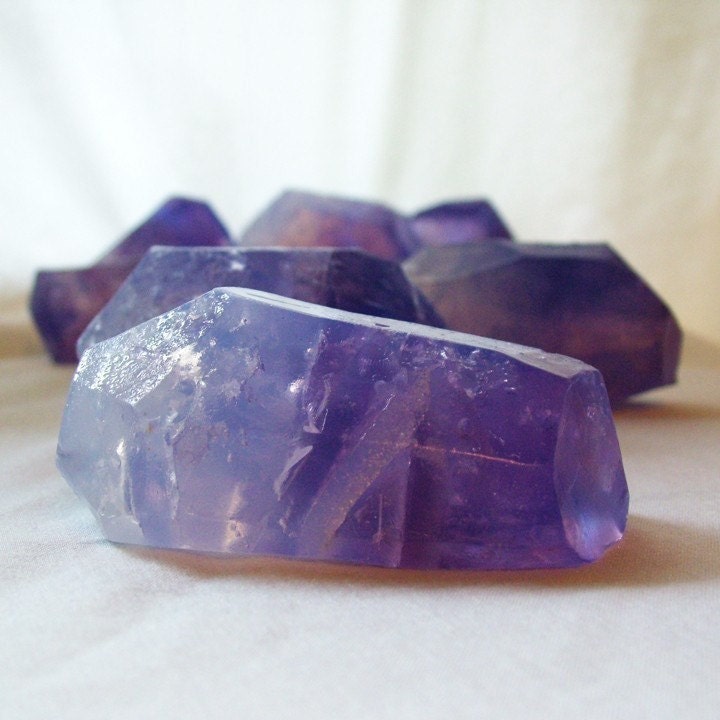The February-born shall find
Sincerity and peace of mind,
Freedom from passion and from care,
If they an amethyst will wear.
If there's one thing all of the different birthstone lists can agree on, it's that amethyst belongs to February.
 |
| Image courtesy Didier Descouens and Wikimedia |
Amethyst is a silicate, like agates. Technically speaking, amethyst is actually quartz. Just that it's purple.
Like agates, amethyst have a long history that dates back to at least the ancient Greeks. The name "amethyst" actually comes from the Greek "amethustos," meaning "not drunk." Amethyst was believed to protect against intoxication; many chalices from Greek and Roman times were actually made out of amethyst for that very reason.
Unsurprisingly, there are a few stories associating amethyst with Dionysus, the Falstaffian alcoholic of the Greek pantheon. In one variation, Artemis protects a young maiden named Amethystos from Dionysus' unwelcome attention (some versions he's after her chastity, other versions he's just irritated at mortals in general and she's in the wrong place at the wrong time) by turning her into stone. Dionysus is then so moved by her beauty/chastity/etc that he weeps (or pours wine) over the stone, dying it purple. In another, the titan Rhea gifted the stone to Dionysus to keep him from losing his mind to wine.

Amethyst Crystal Soap by amethystsoap
Amethyst was rare in those days, and was also prized as a valuable gem for adornment. Today, you can get amethyst fairly inexpensively, due to rather substantial finds not available to the ancient Greeks. Most of it today comes from Brazil, but you can find it all over.
The purple color in amethyst comes from a combination of aluminum and iron. Heat treatment will darken the purple color, or even turn it yellow (at which point it becomes citrine). You do occasionally find natural pieces of beautiful ametrine (quartz crystal with purple and yellow coloration), but this is a rare occurrence. Like citrine, most ametrine you find has been treated (with heat or otherwise).
More about amethyst:
Amethyst at 3D chem has a neat clickable and dragable molecular model of amethyst (silicon dioxide), as well as some more information.
Amethyst results on Flickr
Amethyst on Mindat.org

No comments:
Post a Comment